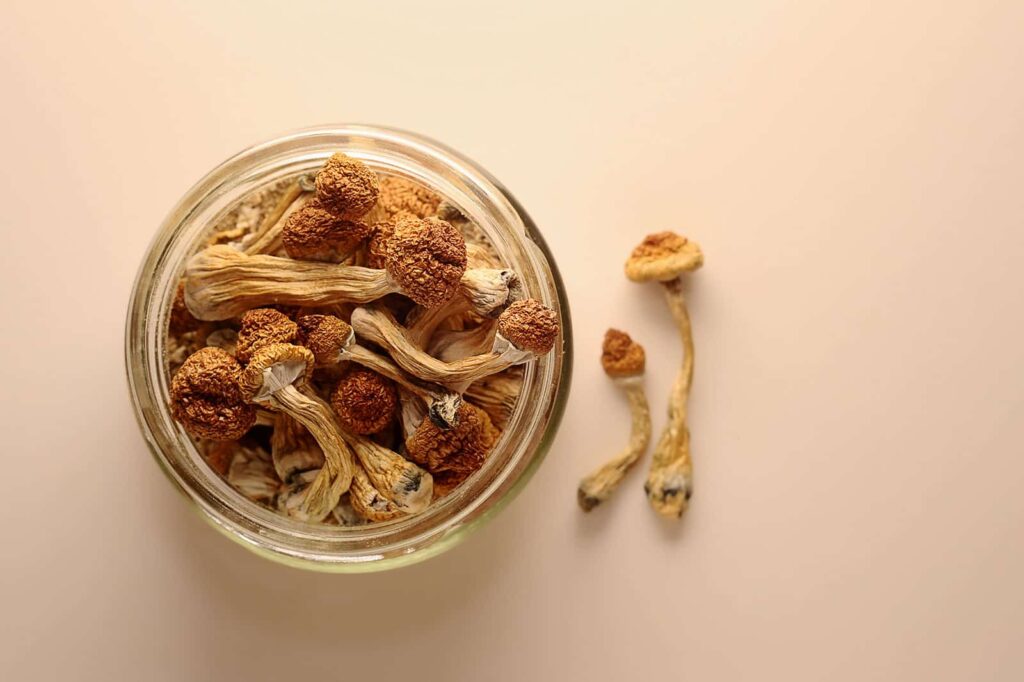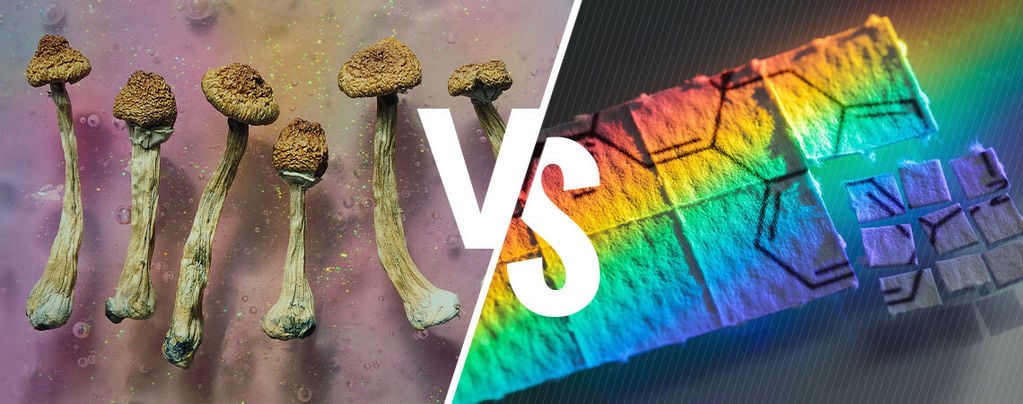Psychedelics have been used for centuries for spiritual, recreational, and therapeutic purposes. Among the most well-known are psilocybin mushrooms (commonly referred to as “shrooms”) and LSD (lysergic acid diethylamide). Both of these substances induce altered states of consciousness, but their effects, intensity, and overall experiences can vary significantly. Understanding the key differences between shrooms and LSD can help users make informed choices, whether for personal exploration or therapeutic use.
In this blog post, we’ll explore how shrooms and LSD differ in terms of their effects, onset, duration, intensity, and potential risks. We’ll also touch on the distinct experiences reported by users of each psychedelic.
What Are Shrooms and LSD?
Before diving into the differences in their effects, it’s important to understand what shrooms and LSD are.
Shrooms, or psilocybin mushrooms, are naturally occurring fungi that contain psilocybin, a psychoactive compound. When ingested, psilocybin is converted into psilocin, which affects serotonin receptors in the brain, leading to altered perception, mood changes, and a shift in consciousness.

LSD, on the other hand, is a synthetic chemical derived from ergot, a fungus that grows on rye. Like psilocybin, LSD primarily affects serotonin receptors in the brain but is known for being much more potent. LSD is often referred to as “acid” and was popularized in the 1960s as part of the counterculture movement.
While both substances are classified as psychedelics, their origins and chemical structures differ, contributing to the variations in how they affect the mind and body.
Onset and Duration of Effects
One of the primary differences between shrooms and LSD is how quickly the effects take hold and how long they last.
Onset
- Shrooms: The effects of shrooms typically begin to take hold 20 to 60 minutes after ingestion, depending on factors like dosage, metabolism, and whether the user has eaten recently. Some people experience mild nausea during the onset.
- LSD: LSD generally takes longer to kick in, with effects starting about 30 to 90 minutes after consumption. The onset is typically smoother than with shrooms, and users may not experience the same level of initial nausea.
Duration
- Shrooms: A shroom trip usually lasts between 4 to 6 hours, though the intensity can peak within the first two hours and gradually taper off.
- LSD: LSD trips are significantly longer, with effects lasting 8 to 12 hours, or even longer depending on the dose. The extended duration makes LSD trips more time-intensive, which is something users should be prepared for.
The difference in onset and duration is one of the key factors to consider when deciding which psychedelic to use. For those who prefer a shorter experience, shrooms may be a better choice, while those looking for a prolonged journey might opt for LSD.
Differences in Effects: Visuals, Sensory Perception, and Emotions
Both shrooms and LSD can lead to vivid hallucinations, changes in perception, and deep emotional experiences, but the nature of these effects can vary.
Visual Effects
- Shrooms: The visuals experienced on shrooms tend to be more organic and nature-related. Many users report seeing natural patterns, colors that seem alive, or objects that appear to breathe or shift. The visual effects of shrooms are often described as more “earthy” and fluid, in line with the natural origins of the substance.
- LSD: LSD visuals are often more geometric and structured. Users frequently report seeing fractals, grids, or kaleidoscope-like patterns. The colors and shapes on LSD may appear more synthetic or digital compared to the more organic visuals of shrooms. These visuals can be sharper and more intense, contributing to a more “surreal” experience.
Sensory Perception
- Shrooms: Shrooms often lead to enhanced connections with nature and one’s surroundings. Many users feel more in tune with the world around them and experience heightened sensory awareness. Textures, sounds, and smells may become more pronounced, but in a softer, more grounded way compared to LSD.
- LSD: LSD tends to amplify sensory input to a greater degree, sometimes leading to sensory overload. Music may feel deeply immersive, colors more vibrant, and physical sensations more intense. Some users describe feeling like their senses are in hyperdrive, making the LSD experience more mentally and physically stimulating.
Emotional Experience
- Shrooms: Shrooms are often associated with a deeply emotional and introspective experience. Users frequently report a sense of connection to nature, the universe, or a higher consciousness. The emotional effects of shrooms can range from feelings of euphoria to deep self-reflection. Some users experience emotional catharsis or a sense of peace and unity.
- LSD: While LSD can also be emotionally intense, it is often described as more cerebral than emotional. Users may feel a heightened sense of creativity, problem-solving, or intellectual curiosity. The emotional effects of LSD can vary greatly depending on the user’s mindset, but the trip is typically more mentally stimulating and less emotionally overwhelming than shrooms.
Risk of Bad Trips
While both shrooms and LSD have the potential to induce positive, mind-expanding experiences, they also carry the risk of “bad trips” – experiences characterized by fear, anxiety, or paranoia.
- Shrooms: Because of their deeply emotional and introspective nature, shrooms can sometimes lead to difficult or uncomfortable emotional experiences. Users might confront repressed feelings or traumas, which can be overwhelming. However, many users also report that these challenging moments lead to personal growth or healing after the trip ends.
- LSD: LSD bad trips are more likely to be associated with feelings of being out of control or mentally overwhelmed. Due to the extended duration and more intense sensory effects, a bad LSD trip can feel never-ending for some users. It’s important to approach LSD with a positive mindset and a safe environment to reduce the likelihood of negative experiences.
Set and Setting: Importance for Both Substances
For both shrooms and LSD, “set and setting” are crucial factors in determining the quality of the experience. Set refers to the user’s mindset going into the trip, while setting refers to the physical and social environment.
- Set: Going into a trip with a clear, relaxed mind increases the likelihood of a positive experience. Meditation, journaling, or simply taking time to reflect before the trip can help prepare mentally.
- Setting: Being in a comfortable, safe space with trusted friends or a guide is essential. Trips, especially on LSD due to its longer duration, can be overwhelming if taken in an unfamiliar or stressful environment.
Conclusion: Choosing Between Shrooms and LSD
While both shrooms and LSD offer powerful psychedelic experiences, they differ significantly in terms of onset, duration, visual and sensory effects, and emotional impact. Shrooms tend to be more introspective, emotional, and connected to nature, while LSD offers a longer, more mentally stimulating journey with sharper visuals and intensified sensory experiences.
Ultimately, the choice between shrooms and LSD depends on personal preferences, the type of experience you’re seeking, and how much time you’re willing to dedicate to the trip. Regardless of your choice, always ensure that you’re well-prepared mentally and physically, and that you’re in a safe and supportive environment.

